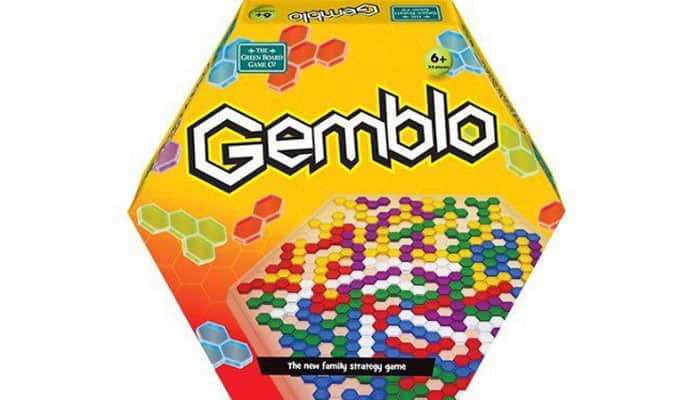

Components
- 1 Hexagonally shaped game board
- 108 pieces of hexagonal blocks
- Rule book
Object of the Game
Place as much of your hexagonal chains as possible on the game board.
Setup
Place the game board at the center of the table. For 3-, 4-, 5- or 6-player game, each player takes all the hexagonal blocks of a color. For 2-player game, each player is to take either all hexagonal blocks of 2 colors or 3 colors.
 Figure 1. Green arrows indicate starting point for 6-player game. 'F' marking is starting point for 4-player game; red arrows for 3-player game |
- For 6-player game, the entire game board is used.
- For 4-player game, the playable area is confined within the blue lines as shown above.
- For 3-player game, the playable area is confined within the red lines as shown above.
For 2-player Game
For 2-player game, the players can play in either of the following ways:
Each player takes all hexagonal blocks of 3 colors, and uses the entire game board.
Each player takes all hexagonal blocks of 2 colors, and plays within the blue lines as shown in Figure 1.
For 5-player Game
For 5-player game, each player takes all hexagonal blocks of 1 color. Put away the following 3 hexagonal blocks of the remaining color. Each player then takes turn picking 3 remaining hexagonal blocks of this remaining color.

Taking turn each player places the 3 hexagonal blocks of the remaining color on the board as obstacles. Placing of these obstacle tiles shall follow the rules below:
Each hexagonal block shall start on the second outermost hexagon space. The hexagonal block cannot be placed on the outermost hexagonal space, or the outermost half-hexagonal space.
Each hexagonal block shall head towards the centre of the board.
No more than 3 hexagonal blocks between two 5-player starting points.
An example is shown below.
 Figure 2. Spaces marked '5' are the starting points for 5-player game |
Game Rules
Players take turn placing 1 piece of his/ her hexagonal block on the board. For 5-player game, the first player to start is the one who places the obstacle blocks the last.
The first hexagonal block must be on the starting point. Refer to Figure 1 for the starting points for 2-, 3-, 4-, and 6-player game; and Figure 2 for starting points for 5-player game.
Subsequent hexagonal block shall be placed according to following rules:
Blocks of the same color cannot touch each other.
Hexagonal block must be placed exactly 1 hexagonal edge from another block of the same color , provided it is not blocked by hexagonal block of other color.
Examples:

Red tile can be placed on location 1, 2, 3, 4, 5, 6, or 7

Example of legal tile placed on location 4

Example of legal tile placed on location 4 & 5

Red tile cannot be placed at location 4 because yellow tile has blocked the hexagonal edge radiating out the red tile on the left

Red tile can be placed at location 4
End of the Game
Players place one hexagonal block on the board on his/ her turn until no legal block can be placed anymore. Players who can still place hexagonal block on the board continue their turns. The game ends when everyone cannot place anymore block.
Player then counts number of hexagons of the remaining blocks he/ she has. Whoever having the least number of hexagon leftovers is the winner.
Continue Reading
